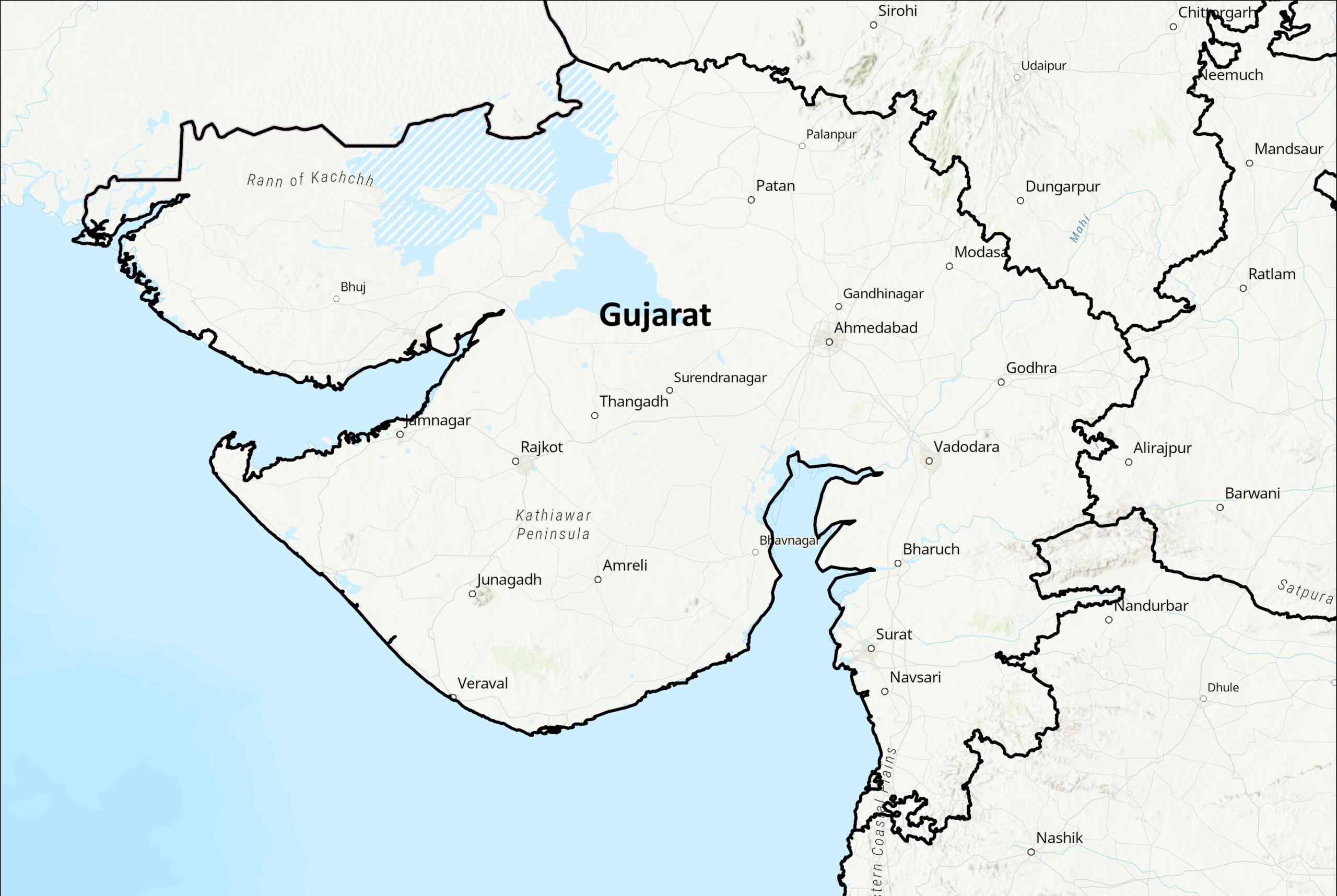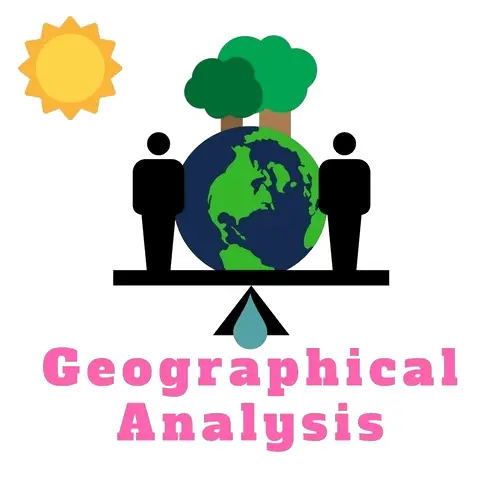It is crucial to understand the geography of Gujarat in order to appreciate its rich history, diverse culture, and economic significance. Situated in western India, Gujarat boasts a diverse terrain that includes coastline, plains, and mountains. With the Arabian Sea to the west and the Western Ghats to the east, the state experiences a tropical climate that influences its agriculture and wildlife. Stay tuned to learn more about the fascinating geographical features and interesting facts about Gujarat.
Key Takeaways:
- Location: Gujarat is located in the western part of India, bordered by the Arabian Sea to the west, Rajasthan to the northeast, Madhya Pradesh to the east, and Maharashtra to the south.
- Geography: The geography of Gujarat is diverse, comprising of a coastline that stretches over 1600 km, arid regions in the north-west, and fertile plains in the central and southern parts of the state.
- Climate: Gujarat experiences a varied climate, with hot and dry summers, and mild winters. The state also receives monsoon rains from June to September.
- Natural Resources: Gujarat is rich in natural resources such as limestone, lignite, bauxite, and natural gas. It is also known for its agricultural output, producing crops like cotton, groundnut, and wheat.
- Industrial Development: Gujarat is one of the most industrialized states in India, known for its petrochemicals, textiles, and pharmaceutical industries. The state has several major industrial zones and ports that contribute significantly to the economy.
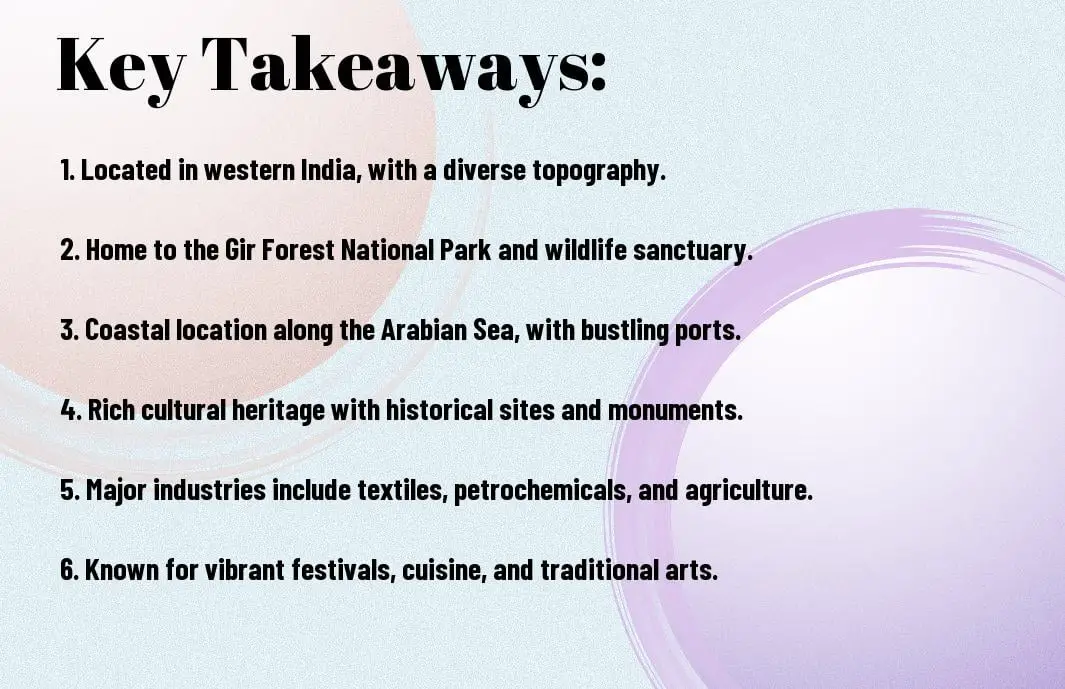
Physical Geography of Gujarat
Topography and Landscape
For the physical geography of Gujarat, it is vital to understand the topography and landscape of the region. Gujarat is a diverse state in terms of topography, comprising flat plains, hilly regions, and coastal areas. The landscape varies from the salt marshes of the Rann of Kutch to the lush forests of the Western Ghats.
Climate Variations and Patterns
Topography plays a crucial role in influencing the climate variations and patterns in Gujarat. The state experiences a diverse range of climatic conditions due to its varied topography. The climate ranges from arid in the Rann of Kutch to more moderate along the coasts. The monsoon season brings heavy rainfall to the state, especially in the hilly regions and coastal areas, while the desert regions remain dry.
It is important to note that Gujarat is susceptible to extreme weather events such as cyclones, particularly along the coastal areas. The state’s climate variations play a significant role in shaping its ecosystems and agricultural practices.
Political and Human Geography
Districts and Major Cities
For the political organization, Gujarat is divided into 33 districts, each headed by a district collector, responsible for administration and development. The major cities in Gujarat include Ahmedabad, Surat, Vadodara, and Rajkot, each contributing significantly to the state’s economic and cultural landscape.
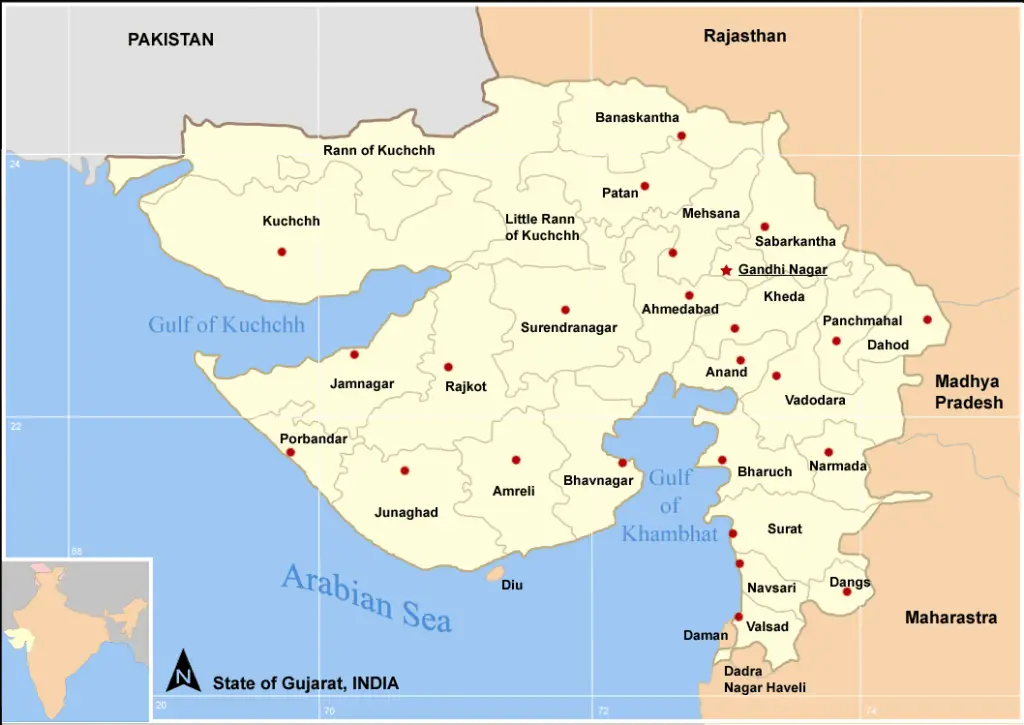
Population and Cultural Demographics
For the population and cultural demographics, Gujarat is the fifth-largest state in India by population, with a rich tapestry of cultures, languages, and religions. The majority of the population consists of Gujaratis, with significant communities of Jains, Muslims, and other diverse groups scattered throughout the state.
Political stability in Gujarat has been a key factor in its growth and development. The state has a strong emphasis on governance and has been successful in attracting investments in various sectors, leading to economic prosperity. However, Gujarat has also faced challenges, including religious tensions and periodic outbreaks of communal violence. It is crucial for the state to address these issues to ensure harmonious coexistence among its diverse population.
Natural Resources and Wildlife
Mineral and Energy Resources
Unlike many other states in India, Gujarat is not rich in mineral resources. Any major minerals found in the state include limestone, lignite, bauxite, and agate. The Kutch region is known for its lignite deposits, which are used for power generation in thermal power plants.
Flora and Fauna Diversity
Mineral-rich Gujarat is also a home to diverse flora and fauna. The state boasts a variety of ecosystems ranging from mangroves along the coast to dry deciduous forests in the central region. Mineral reserves in the Gir Forest National Park are home to the last remaining population of Asiatic lions in the world, making it a critical habitat for conservation efforts.
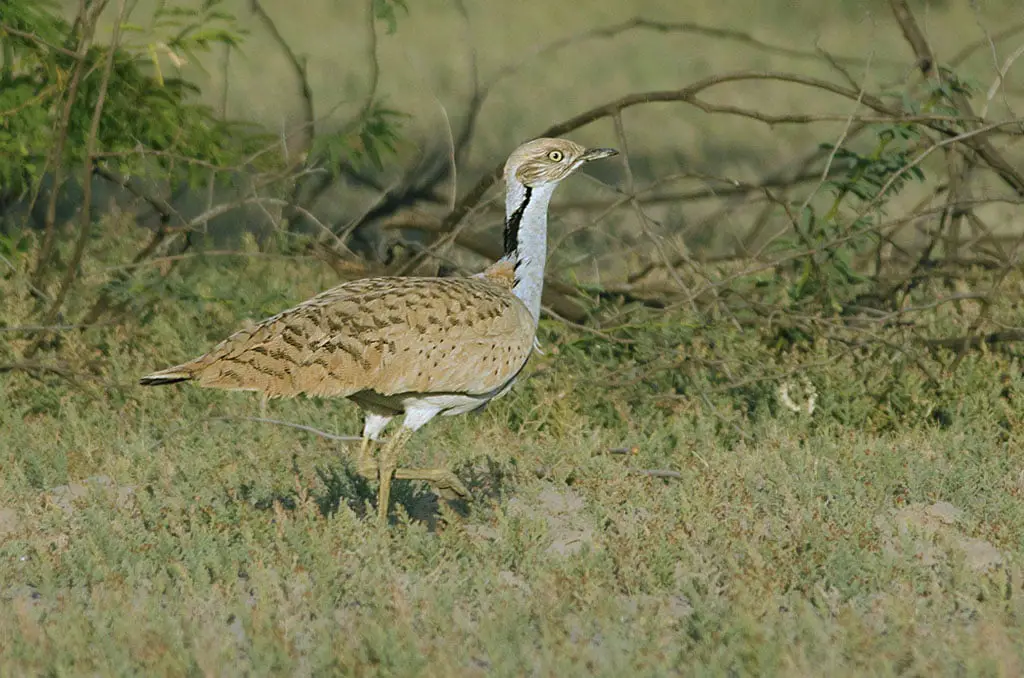
This diversity also extends to the birdlife in Gujarat, with several wetlands along the coast attracting a multitude of migratory birds during the winter months. The state’s unique topography and climate support a rich biodiversity, making it a hotspot for eco-tourism activities.
Environmental Considerations and Challenges
Conservation Efforts
Your environmental considerations in Gujarat involve significant efforts towards conservation. The state is home to various wildlife sanctuaries and national parks like Gir National Park, Marine National Park, and Nalsarovar Bird Sanctuary. These areas play a crucial role in preserving the rich biodiversity of Gujarat, including rare species like the Asiatic lion and the Indian wild ass.
Impact of Climate Change
Challenges related to climate change are increasingly affecting Gujarat’s environment. The state experiences heatwaves, erratic monsoons, and sea-level rise, leading to adverse impacts on agriculture, water resources, and coastal communities. The most concerning aspect is the threat posed to vulnerable ecosystems and wildlife habitats. Immediate action is required to mitigate these effects and adapt to the changing climate scenario.
Efforts to address the impact of climate change in Gujarat include initiatives to promote renewable energy sources, enhance water conservation practices, and strengthen climate resilience among communities. These efforts play a crucial role in safeguarding the environment and ensuring a sustainable future for the state.
Economic Implications of Geography
Agriculture and Crop Distribution
Many of Gujarat’s economic activities are heavily influenced by its geography. The state’s diverse topography and climatic conditions support a variety of agricultural practices. From fertile plains to arid regions, Gujarat boasts a wide range of crops, including cotton, groundnuts, and rice.
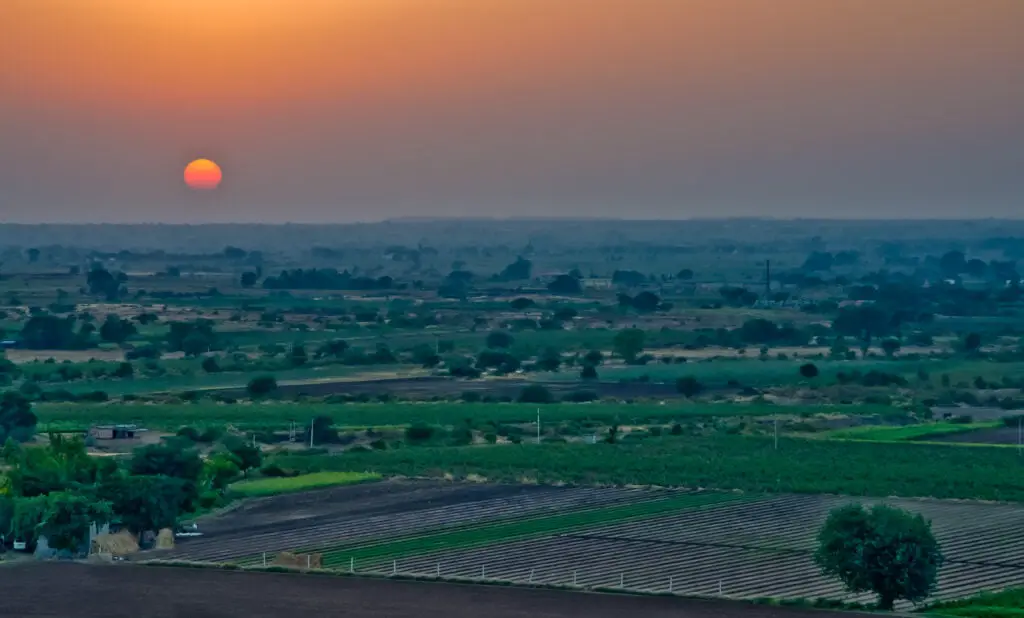
Industrial Development and Trade
The industrial development in Gujarat has been remarkable, with the state emerging as one of India’s leading industrial hubs. Gujarat’s strategic location on the coastline has facilitated trade and commerce, attracting investments from both domestic and international markets. The state is home to a flourishing textile industry, as well as chemical, pharmaceutical, and automobile sectors.
Any discussion of Gujarat’s industrial development cannot overlook the vibrant trade network that the state has established. The ports of Gujarat, such as the Kandla and Mundra ports, play a crucial role in facilitating international trade. These ports serve as vital gateways for importing and exporting goods, contributing significantly to the state’s economy.
The industrial growth in Gujarat has not only boosted the state’s economy but has also created numerous employment opportunities for its residents. The state’s proactive policies and infrastructure development have further propelled its industrial sector, making Gujarat a key player in India’s economic landscape.
Conclusion
Summing up, the geography of Gujarat is diverse and fascinating, encompassing everything from arid deserts to lush forests. The state’s strategic location along the Arabian Sea has shaped its history, culture, and economy over the centuries. With its rich natural resources, diverse topography, and varied climate, Gujarat plays a vital role in India’s development and growth. Understanding the geography of Gujarat is important for appreciating the state’s unique characteristics and its significance in the regional and global context.
Visit Gujarat official website: click here

